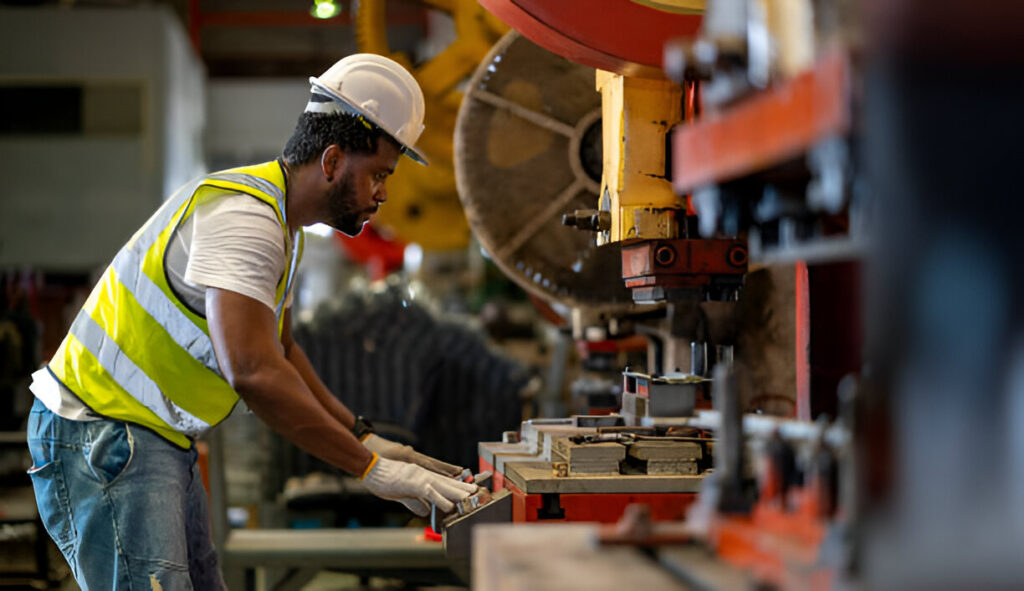In the realm of industrial operations and manufacturing processes, the nuance of precision cannot be overstated. Within this intricate ballet of machinery and production lines, a single element often overlooked yet pivotal for accuracy and stability is the humble yet essential component known as levelling feet. In this article, we will delve into the reasons behind the importance of levelling feet and how they contribute significantly to the operational efficacy of industrial equipment.
Foundational Stability and Precision
At the core of any well-functioning piece of industrial equipment is the concept of stability. Vibration and movement can induce errors in precision, misalignments, and ultimately, lead to damaged machinery or substandard products. By contributing to foundational stability, levelling feet offer an initial layer of defence against such operational calamities.
Levelling feet are designed to ensure that each piece of equipment is perfectly horizontal. Even the slightest tilt can cause machinery to work improperly or with increased wear, which might lead to premature failure. By allowing for minute adjustments, levelling feet ensure that the equipment rests firmly on its base, distributing weight evenly and preventing tilting or rocking.
Adaptation to Uneven Surfaces
Industrial flooring is frequently uneven, with imperfections that can translate to machinery above. Levelling feet come into play by compensating for these inconsistencies. They are adjustable, which means they can be extended or retracted to match the contours of the floor, creating a level platform for the equipment to operate on.
This adaptability is particularly critical in environments where precision is key, such as in machining operations where a deviation of even a few millimetres can cause significant issues in the production process or compromise the quality of the final product.
Load Distribution and Weight Management
Heavy machinery places a substantial amount of weight on flooring structures. Levelling feet are instrumental in ensuring that this weight is distributed evenly across the base of the equipment. This not only prevents stress and potential damage to floors but also avoids the creation of pressure points on the machinery itself that could warp or distort the frame over time.
An even distribution of weight helps keep the machinery stationary during operation, reducing motion that could interfere with its functions. Furthermore, levelling feet designed for heavier loads often come with enhanced materials and structural supports to maintain integrity under substantial stress.
Minimising Vibration and Noise
Vibration is an enemy to industrial equipment efficiency, causing unwanted movement and noise that can reverberate through an entire facility. Levelling feet act as shock absorbers, decreasing the amount of vibration transmitted from the equipment to the floor and vice versa. This dampening effect not only prolongs the life of the machinery but also creates a more favourable working environment.
Vibrations are not just a nuisance; they can present very real dangers in a workshop or factory setting. By minimising these movements, levelling feet help in maintaining a safer workplace.
Enhancing Maintenance and Cleanliness
Maintenance is a critical aspect of industrial operations. Levelling feet provide an often overlooked benefit towards maintenance and cleanliness. By elevating equipment off the ground, they afford easier access for cleaning beneath and around machinery, an essential aspect in industries where hygiene is paramount, such as food processing or pharmaceuticals.
During maintenance, the ability to adjust the feet allows for quick re-levelling of the equipment post-repair, ensuring equipment returns to operation within optimal parameters.
Longevity and Cost-Effectiveness
One might consider the addition of levelling feet as a cost-saving measure over the long term. By mitigating the risks of damage from uneven floors, vibrations, and improper load distribution, these stabilising components extend the lifespan of the equipment. Minimising downtime related to repairs and maintenance contributes to overall cost-effectiveness.
Levelling feet can be made from various materials based on usage requirements — from rubber and plastic for light applications, to stainless steel for heavy-duty use and environments demanding strict cleanliness standards.
Customisation and Versatility
The industry has recognised the essential nature of levelling feet, which has led to a wide range of customisable options. Manufacturers can choose from a variety of sizes, materials, and designs to suit specific machinery and environmental conditions. Some levelling feet also come with additional features, such as anti-slip pads, articulation for angled installations, and different mounting options to cater to the unique requirements of various equipment types.
Choosing the suitable levelling feet for particular machinery involves considering load capacity, environmental factors, and the level of precision needed. Different industries will require different specifications, but the ubiquity of levelling feet across machinery types highlights their importance.
Conclusion
The role of levelling feet in ensuring the precision and stability of industrial equipment cannot be understated. They are fundamental components that safeguard machinery performance, extend equipment life span, and promote a safe and efficient working environment. As overlooked as they might be, levelling feet stand as unsung heroes in the industrial world – small in stature but colossal in their contribution to a seamless production process.
Embracing the significance of these components will continue to underpin the success of industries reliant on the steady hum of well-adjusted machinery. For any enterprise looking to build or maintain a facility teeming with precision and efficiency, investing in quality levelling feet is not just a wise choice; it’s a fundamental one.
Also, read – Denmark: Your Ultimate Guide to Starting a Business in Denmark and Forming a Company in Denmark


